HOW GOODSEED TOOLS CAN HELP YOU
TRAIN YOUR FAMILY IN THE GOSPEL
(Reading time: 17 minutes)
In this series, we describe practical ways our tools have been used by believers worldwide to share the message of the gospel.
In the following article, we will begin by focusing on how fathers, mothers, grandparents and other parental figures can share the good news with the children in their lives.
We hope you will find these tried and tested suggestions helpful. We also invite you to share your own experiences with us to benefit others. You can write to us via our contact form.

The sentiment expressed by the apostle John is one with which many Christian parents can identify:
“I have no greater joy than to hear that my children are walking in the truth.” 3 John 1:4 NIV
Before our children can learn to walk with God, they first need to be taught the message of the gospel. Only then can they have a meaningful opportunity to come to a personal faith in Christ for salvation. Only then can they begin their journey with God.
Furthermore, putting the gospel in context is a valuable help in understanding its message. When children have a creation-to-the-cross perspective of the gospel message, it becomes the framework upon which the rest of Scripture can be built.
Many of us want our children to have a good grasp of the good news but we have questions and concerns as to how we can teach them. We may be thinking:
• “What should I teach? What’s essential for my children
to understand about the gospel?"
• “I don’t think I am a gifted teacher, but
I want to do my best. I need some help.”
• “I’m not sure my children are interested. I don’t want
to bore them or turn them off.”
• “I’m skeptical of my children’s capacity to understand
such things at their age.”
• “What do I do if my kids have doubts about the Bible and I can’t answer them?”
As an equipping ministry, we would like to share the following tried-and-tested ideas that have helped many parents with this task. But first, it would be beneficial to understand some of the key challenges.
“How do I share the gospel in a way so that they have strong foundations upon which to build their Christian lives?”

Common Challenges in sharing the gospel with our children
1. A lack of context provided for understanding the message
The gospel of John is what most believers turn to when sharing the gospel. This is rightfully so, because this is the main purpose for which the book was written. John himself stated:
“These are written that you may believe that Jesus is the Messiah, the Son of God, and that by believing you may have life in his name.” John 20:31 NIV
The message was clear to the original audience. Those of Jesus’ day knew the background stories and understood the Old Testament history that John draws on to explain the gospel.
However, the accounts we read in John took place millennia ago in another time and culture far removed from the world with which our children are familiar. Today we don’t have the same background knowledge that John’s original audience had. If you were to read just the first two chapters of John with your children and then ask them to highlight every mention of a person, place, event or any other piece of information that they didn’t understand, you would likely find huge portions of text highlighted.
In the first two chapters alone, there are no less than 55 references to concepts, customs, characters and geographical places which are either foreign to most people today or their significance isn’t understood. This includes such terms as: Lamb of God, Moses, priests, baptizing, Jewish Passover and temple.
In such cases, communicating the gospel clearly will be a challenge because they lack understanding of the context of the message.
2. Use of a haphazard approach to reading the Bible
Think of what would happen if you played out this scenario with your children. Pick out a new book to read to them, first opening it to the middle. Begin by reading aloud a section before flipping back to the introduction to read. Continue by jumping to another chapter. As you skip from page to page, not only would you probably succeed in confusing your children, but they would also feel very frustrated by the way they heard the story told in bits and pieces. They will end up not understanding the story at all or seriously misunderstanding it.
Children today don’t have the same background knowledge that John’s original audience had.

An Approach to explaining the gospel message to our children

How then should we share the gospel in a meaningful way with our children? From our experience, here are five recommendations:
1. Stick to the core message
The Bible is a big book and it speaks about hundreds of controversial subjects and covers many aspects of life. When sharing the gospel, it is important to stick to the gospel and not get sidetracked by other subjects. The gospel is the core message of the Bible and we want to stay with this topic first.
2. Develop a “clothesline” of key events
In sharing the gospel, we want to focus on certain key events of the Bible that relate to this topic, beginning in Genesis and progressing to the cross. It’s akin to hanging up only certain articles of clothing on a clothesline. Focusing on the big picture of the gospel means that we will be leaving out many stories. There will be “gaps in the clothesline,” so to speak. Once your children understand the gospel message, that will be the time to go back and fill in the gaps.
3. Stick to the four irreducible minimums of the gospel
In order for the gospel to make sense to your children, you need to focus on four key essentials in your explanation of the good news. Neglecting any one of them deprives the gospel of important content necessary for your child to make sense of the gospel.
These four irreducible minimums are:
Frequently, the first point—a Holy God—has been understated or overlooked yet it is key to one’s grasp of the gospel. For more information on the irreducible minimums, read this article.
This chronological method of sharing the gospel has an added benefit: it provides an important framework for helping your child understand the rest of Scripture. With the core story in place and the foundation set, when a child reads the rest of Scripture, he or she has enough structure, background and understanding to properly understand the other sections of the Bible. The clothesline is in place and the child can hang the other portions of Scripture in its correct place.
I. A Holy God
II. A Helpless Sinner
III. A Sufficient Substitute
IV. A Personal Faith
Tried & Tested:
Tools and How-tos
Ages 5-10
Time Requirement: Do this as fast as you can but as slow as you must. This helps the children understand the story as one narrative while ensuring they understand. This will take approximately 2 hours on average.
Read: Cover one chapter a day over 10 days, or two chapters a day for five days; or cover the whole book in one sitting. However, do not rush through it.
Ensure understanding: Ask your children the questions at the end of each chapter. Make sure they can answer all the questions accurately. If they are not able to, read the relevant portion and ask the questions again. Do this till they understand it clearly. Do not progress in the story before that.
Retell: At the end of the book, ask them to retell the story. Listen to the details as they retell to check for understanding. If they forget or stumble, go back to that section and read it to them again.
Believe: Ask them questions found at the end of the book and in this link to determine what they believe.
Reinforce: Play them the optional audio CD that accompanies the book. You can put the CD on while they follow along with the book or play it like an audiobook during a car ride. Do this often till they know the story well.
Visual Aid: If you would like a lamb as a visual aid to help them remember the message, you can consider using this.
Colour: Offer colouring pages to help your children remember the main points.`
Craft: Do a lamb craft as a fun activity to reinforce the lessons. Try this.
Study: Using a Bible, help your children look up the verses listed at the bottom of the pages in The Lamb. Explain the Bible verses in the context of how the book was presented to them. This trains children on how to look up Scripture and gets them into the habit of always checking what is taught against what God’s Word says.
Additional tools: The Lamb is also available in DVD format. After you have guided your children through The Lamb, the DVD can be used to reinforce what they have learned. The DVD goes through the entire book.
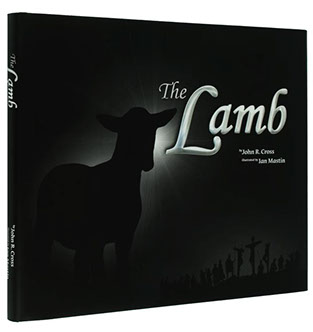
The Lamb Picture book


Ages 10-15
The options below cover varying formats of learning and engagement levels. Choose the one that works best for your family.
If you prefer to read:

The Stranger on the Road to Emmaus
Time Requirement: It takes about 11 hours to read aloud the entire book. Set aside time each day or several times a week. Some take the time immediately after breakfast; others do so after the evening meal or just before bedtime. An extended period of time on the weekends has worked well for others while some have found vacation periods to be the best.
Read: Read the book out loud together. The parents can read the commentary while the children can read the Bible verses. This allows Scripture to impact a child most directly. This works best if each person has a book or if one book is shared by two.
Review: At the end of each section, ask if your children understand. Ask them to summarize key points. Only answer questions pertaining to that section. Defer other questions, as many common ones will be answered later as you progress in the book. Take note of other questions by writing them down and putting them aside to be answered later.
If you would like a more interactive learning experience complete with workbook and visual aids:
Worldview Rethink with
The Stranger on the Road to Emmaus
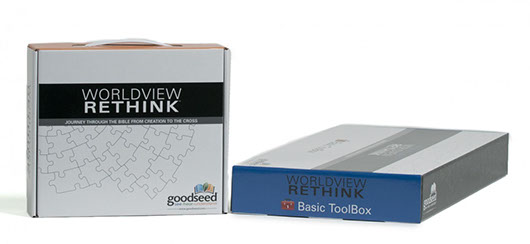
Time Requirement: Set aside at least one hour for each session. The entire content takes about 12-15 hours. The shorter the span of time taken to cover the content, the more cohesive the gospel story will be to them.
We recommend taking no more than 6-7 weeks to complete this. Some block off 2 hours every weekend. Others take an hour each day over 2-3 weeks.
Read: Each person would need to have his own book and a highlighter. Go through the book together, reading out loud. The parent can read the commentary while the children read the Bible verses. This allows Scripture to impact a child most directly.
Highlight: In reading the content together, the parent will guide the children to highlight the important statements with a marker.
Watch: At the relevant sections, pause to play the relevant video clip on the DVD.
Visual Aids: Use the visual aids at the appropriate times. These are helpful in explaining and reinforcing many key ideas in a way that is particularly meaningful to children. Often, they will see the visual aid and recall the teaching point.
Review: After each section, pause to allow your children to fill in the workbook questions. Review the answers together. Ensure they understand. Read again the sections they do not understand well and attempt the review questions again.
Further engagement using visual aids:
Basic ToolBox: Get your children to help assemble the visual aids in preparation for the relevant sections.
Tabernacle Model: Make this a family activity to assemble the model kit. You can also paint the kit with your children.
Review options using visual aids: To check for understanding, pick up a visual aid, give it to your child and ask him to retell the story using the visual aid. Or, ask him to express in his own words the teaching point that the visual aid is making.

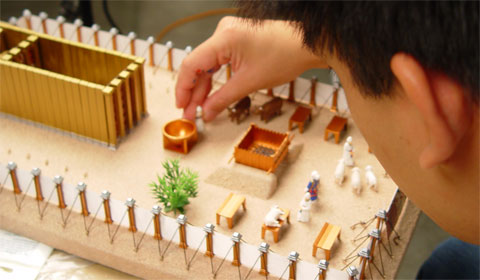
Ages 15 and Up
While any of the options given for ages 10-15 will work for this age group as well, here are other options to consider.

Note: This book is covers more topics and answers more questions. It addresses many misconceptions people today have about the God of the Bible. Even if your children have gone through The Stranger before, this book acts not only as a good refresher, it familiarizes them to biblical answers to questions that people with postmodern or secular worldviews may have. It would not be uncommon for them to have friends who subscribe to these worldviews.
Read independently: If your children prefer to read the book for themselves, give each of them a personal copy. If you have one copy, you can read the book first and then pass it to them. If you have more than one copy, track along with them so the content is also fresh in your mind. Actively engage them in conversation as they read through the book by checking their understanding. Allow them to ask questions they may have. Refrain from answering questions the book will cover until they finish reading the book. Once they have finished, set aside time to ask them what they think.
Study as a family: You can read the book as a family as outlined in The Stranger on the Road to Emmaus for “Ages 10-15”. You can also use the workbook for review.
Worldview Rethink: By This Name is also part of the Worldview Rethink curriculum. This means it has a leader's guide and interactive edition with its videos. It uses the same visuals aids sets as The Stranger. You may wish to use it to lead a study with your family.
By This Name
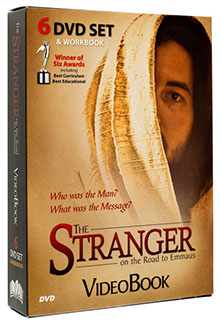
The Stranger on the Road to Emmaus VideoBook
Note: This Videobook covers the content of The Stranger. This is a helpful way to learn—alone or together—without the necessity of a leader. If your children no longer live at home, you may choose to send them the link to the online version. They can learn at their own pace.
Time Requirement: This is an 11-hour series. Add in more time if using the workbook. It would be best to set aside fixed times each week with the intent of finishing the series within no more than 5-6 weeks.
Watch: Watch the video together. It is broken up into segments of between 4-27 minutes each.
Review: Using the workbook that is included in the set, review the questions.

OTHER SUGGESTIONS
1. Have your children teach as they were taught
If your children understand clearly the message of the gospel and trust Jesus for their salvation, you can then shift your focus to building their faith, teaching them more about God and his Word. Another thing you can do immediately is to share with them the mandate of being ambassadors for Christ.
For ages 10 and up:
Ee-Taow!: The Mouk Story and The Next Chapter
Watch this film together as a family. Focus on how the Mouk people, upon understanding and believing, immediately took it upon themselves to share this good news with others. Even though they were new in the faith, they shared what they had learned.
Encourage your children to do the same. Get your children involved in helping you teach younger siblings, or encourage them to read the books with their friends.
Here are some stories of how children shared with their friends:
God used his magic wand!?
Gloria’s 7-year-old daughter, Jessie, recently started asking questions like “Who made the world? Where did people come from?” As a child, Gloria had gained some Bible knowledge from her Grandma and from summer camps, but now all she could tell Jessie was “God made the world.” But that wasn’t enough for Jessie. Learn what Gloria did next.
Children with a passion for the gospel
Our fourth grade daughter decided she wanted to give The Lamb as a part of her Valentines to her classmates. We are not allowed to distribute these at our public school, so she plans to mail them. Read more.
2. Don’t be afraid of repetition
Any parent who has little ones knows they have no problem with repetition. They’ll sing the same songs over and over and over again! It’s actually a helpful way to learn.
In that vein, GoodSeed tools aren’t meant to be put on the shelf when you’re done with them. Many families find there is benefit in re-using GoodSeed tools.
As kids grow, they glean new insights and their depth of understanding increases by going through the story of the Bible from creation to the cross again. The Stranger contains over 1100 Bible verses explained in context. By This Name contains over 1500. That’s a lot of Scripture—a powerful influence on a child’s life.
You will be surprised at the different discussions that come up each time your children go through the study. Again, it’s just another way to shore up their foundations of understanding so when they are old they will not depart from it.
Many families have seen another benefit from doing the study more than once. It provides training so that your children will know how to guide others through the gospel message. Following the same method of reading together, they can lead a classmate, a neighbour, a cousin, or even a small group through the gospel.
3. Set aside regular teaching time
In order to give your children a good grounding in the gospel message, you must be deliberate in managing your family’s Bible study time. If the message of the gospel is to make sense, you need to guide your children through in as short a time as possible without rushing. This is because the gospel story is a continuous narrative, and taking too many breaks or dragging it out too long makes the story fall apart. Your children will start to forget and the stories will be disconnected, losing their vital meaning and connection.
Now, you may be thinking, “But our family’s schedule is crazy-busy! How can we fit that much time into our week for Bible teaching?” You know what? You can’t. Something has to give. You’ll just have to make time.
“Look carefully then how you walk, not as unwise, but as wise, making the best use of the time, because the days are evil.” ~ Ephesians 5:15-16 ESV
You may need to cut back on sports or other extra-curricular activities. Reduce the time spent on TV or video games. Whatever is necessary, just do it and stick to it! Remember that time we have with our children is short and the days and years pass quickly. There is no time like the present to set aside a regular teaching time to help your children truly understand God’s Word. It may be the most powerful influence you will ever have on the direction their lives take.
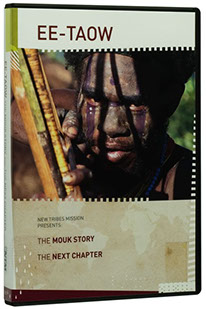


they glean new insights and their depth of understanding increases


TESTIMONIES
from families to encourage and inspire you
Grounding your children in the gospel is not as hard as it appears. Here are a number of testimonies sent to us of parents and children learning and sharing the gospel.
Mommy, I understand
Suzanne,* had an autistic son and she despaired over how she could share the gospel with him. After thinking about it, her friend Jill told her, “I think I have just the book for you.” She passed Suzanne a copy of The Lamb. Read what happened.
In-ká-hai captured the minds of my children
Our family has really enjoyed reading In-ká-hai! I have read it to the family, one chapter at each sitting. We finished the epilogue tonight and we will go through the study questions the remainder of this week. Read more.
It’s a shame I didn’t understand as a teenager. I might not have rebelled.
Recently my sister, Sue,* has been inquisitive about God and the Bible. I suggested she read, The Stranger. She told me she couldn’t put it down! She wrote me an email and I was so moved and thankful in my heart for God’s working in her life. Read more.




RELATED ARTICLES
Make the gospel story a Christmas tradition
For many children, Christmas is the best holiday of the year with Christmas gifts, a tree trimmed with decorations, and feasting! They grow up with many happy memories of Christmas. As believers, we especially want our children to remember Christmas as a time when Jesus is the focus of our attention. We want to cultivate memories of celebrating God coming to earth to fulfill his promise of a Saviour. We want our children to recognize that Christmas is part of the larger story of the gospel of Jesus. Read more.
Teach God’s Word to your kids amidst the busyness
John sighed to himself as he tucked his children into bed, “How am I supposed to teach my children what they need to know about God when there just aren’t enough hours in a day!” Read more.
Worldview Rethink curriculum: a handy gospel tool for parents
It is important for moms and dads to ground their families in God’s Word. But many parents (especially fathers) are so busy providing, it’s difficult for them to find time to share the truths of God’s Word with their children. Many parents also don’t feel comfortable teaching the Bible because they haven’t had any “training.” Where should they start?
How do I use visual aids to teach the Tabernacle to children?
The Tabernacle of Moses can be a difficult subject to teach, especially to children. How do you explain the meaning of this seemingly obsolete structure, its strange furnishings, and all the complicated priestly rituals related to it? Pam, a children’s ministry director at a California church, found that with the help of the free Sunday school lessons and painting guide downloaded from GoodSeed, her first-to-fifth grade midweek group was soon absorbed in the great visual aid God gave the Israelites that points to Christ. Read more.
When family rejects the gospel
It’s heartbreaking when family, for one reason or another, don’t believe. If you have complicated family relationships where sharing the gospel is risky and discouraging, you’re not alone. Here are some encouraging insights and practical ideas for you. Read more.
I just can’t share the gospel with my family. It’s too hard.
Brother, sisters, parents, in-laws and children—they’re the people who have seen you at your worst, argued with you, who know your strengths as well as your weaknesses. Here are some stories of real people who shared the Good News with their loved ones. Read more.



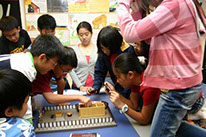


MORE HOW TO ARTICLES
Photo credit: "Paper Weaving" by Joel Penner is licensed under CC BY 2.0
Photo credit: "Clothesline" by Kari Sullivan is licensed under CC BY 2.0
I WANT TO LEARN
ABOUT GOODSEED
The Monthly
GoodSeed eNewsletter
Sign up to receive articles, testimonies, sneak peeks of new resources & upcoming seminars. You'll receive a PDF copy of The Tabernacle: Model of Messiah as a thank you for partnering with us.
© 2023 GoodSeed International. All rights reserved.


